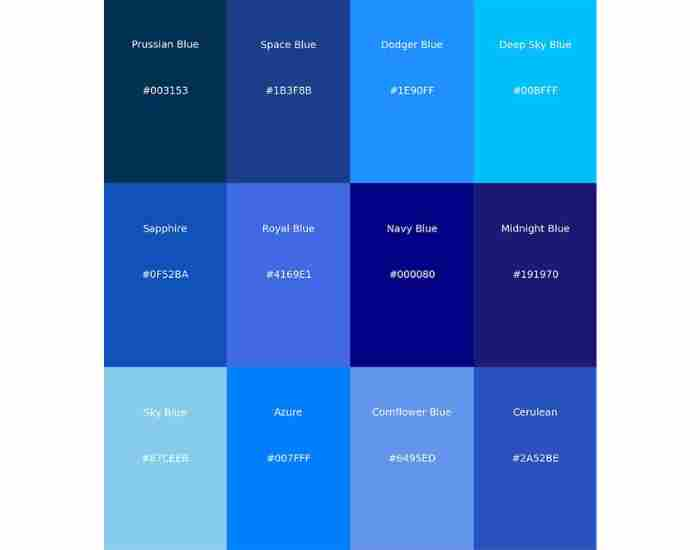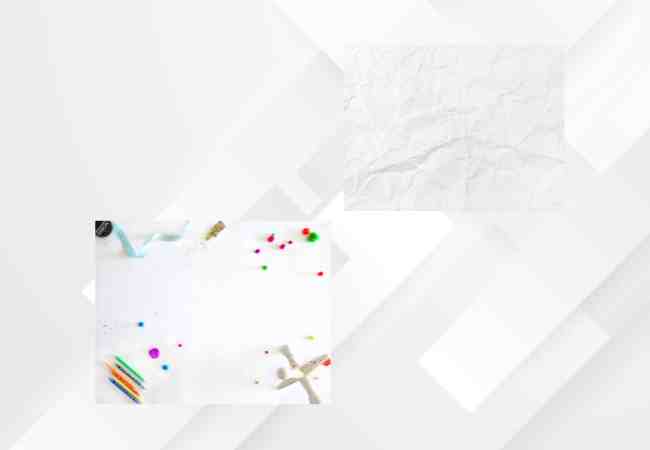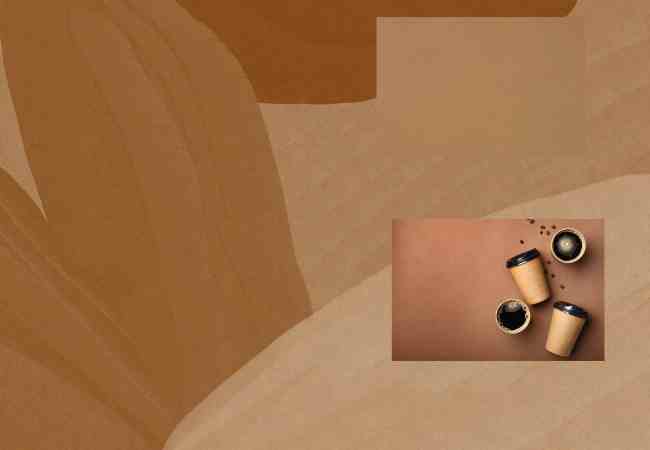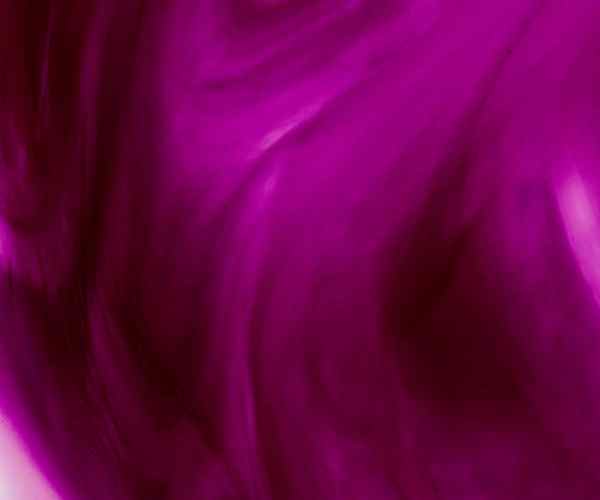Color theory and color mixing are key to all artists, and everyone who loves art or DIY projects. No matter if you are a professional or just got started as an artist, the knowledge of how to blend a variety of color shades allows for an endless possibility of creative ideas. Through color mixing mastery, your ideas will be able to convey more, compositions will appear more harmonious, and your visualizations will be realized with much more confidence.
Blue is a distinctive color which on the one hand has a great significance to the artists and designers and on another quite an interesting one. It is the color of emotions, everything like the blue sky even how the ocean looks can simply be blue. And due to the fact that this color is so emotionally expressive it is unsurprising that many artists who paint with blue try their hand at mixing different shades of it. In the case where you are working on the blue color such as landscape, interior space or any piece of work, the ability to paint in many shades of blue is a great plus.
Let’s picture an inexperienced painter gazing at an empty canvas, full of hopes and aspirations. In this case, the artist seems to be yearning for the ability to create something new. The journey of this specific artist starts when they take the blue tubes of paint into their hands. This beginner stands for many people who have ever wanted to do something creative and artistic. Subsequently, as we accompanied into creating more and more different shades of the color blue, we dissipated their anxiety and made the way for a unique and creative experience.

Exploring the Color Wheel
The color wheel is an important concept for artists and designers because it allows them to visually see how colors are related. It is made up of twelve colors that are placed on a circular plane with a smooth transition from one color to the next. Among the three primary colors, red, blue and yellow, these primary colors serve as the basis for all the colors in this theory. They are also the only colors that cannot be created from the mixture of other colors.
Primary, secondary and tertiary colors
It is important to know the primary, secondary, and tertiary colors in order to mix colors properly. It is already known that primary colors can exist only by themselves and cannot be made out of other colors. Two primary colors combine to create a new color, known as a secondary color. For example, mixing red and blue makes purple, and mixing red and yellow makes orange. In simple terms a tertiary color is created using either a primary color or secondary color. As a result there exists six tertiary colors.
Blue’s Functionality
On the color wheel, blue stands out quite famously in the middle of green and violet, thus making it an essential element required in the creation of different tones. People have a tendency of labeling blue as a ‘cool’ color as it is associated with calmness, stability and relaxation. As far as color mixing is concerned, blue works as an anchor point from where one can derive numerous colors. Whether it’s the light blue of the sky or the dark blue of night, hues of blue have always come in handy for artists to showcase variety of emotions and feelings. A color theory explanation would be incomplete without detailing the placement of blue in the color wheel as it is responsible for giving artists direction as well as depth.
Mixing Techniques
For beginners learning how to mix colors, it’s advisable to begin with the basics. Start by choosing the basic colors you would like to work with starting from blue. Then gradually mix and match these colors to see what the combination yields. This understanding will serve as a basis for a more complex level of understanding color mixing.

Gradual Mixing
Merging paints in stages is one of the best approaches to amalgamating colors and achieving desired shades; never be hasty to add paint into the mix, always begin with the smallest quantity and work your way up until you achieve your ideal shade. This not only allows for easier color targeting but also makes it easy to tweak the intensity of the color making it stronger or weaker based on the mix ratio. Always keep in mind that it would be much more difficult to take away a deeper color than it would be to apply more paint, therefore it’s best to remain careful!
Trying out different mixing ratios can be enjoyable, so don’t hesitate to do so!
Every color has its character, and the combination of different amounts yields an infinite number of varieties. So try and mix the primary colors in equal amounts to begin with, and then slightly change and see what features the outcome has. Keeping a record of ratios and outcomes will help you keep track of your experiments. Overall, learning the process through mistakes will allow you to learn from your experiences and discover new techniques of color mixing.
Recoloring using Tone and Hue
Mixing simply involves putting two or more colors together but being able to remediate or adjust the hue and tone of a color is crucial for obtaining deep shades. For instance, adding white to a blue mix lightens the hue and creates softer pastel shades. On the other hand, black or gray may be incorporated to darken the hue, resulting in the creation of deeper and tonal colors. Feel free to change the amount of these neutral hues so as to reach the specific saturation of blue you want. You should also think about adding other colors that will counterbalance the blue shades and shift the hue either to a tawny color or a chillier one to make things more fascinating. By practicing both these techniques, one will likely have a better mastery over the other expressive potential of color mixing.
Practical Illustrations & Suggestions
Sky Blue
This light blue color is one of the easiest tones to create as long as you know where to start. First off, choose any of the blue tones in your palette, cerulean or ultramarine blue for example. Mix a bit of white into the blue until you get the desired tint. On the other hand, you can throw in a very small amount of cyan or turquoise to the mixture for a more realistic result. Try adding more white paint during the mixing process to achieve the color of a dry and warm sky.
Turquoise Twist
If you are looking for bright artwork or decor then turquoise is the color that you should go with. To achieve this color, one should ideally begin with a base of blue which could either be phthalo blue or cobalt blue and then slowly add green paint until the perfect turquoise color is achieved. However, one should take caution while adding yellow or warm tones as turquoise usually is on the cooler side. Try blending different ratios of blue and green to the blue base until you find the right combination. Also, don’t forget the color wheel which will provide suitable complementary colors for turquoise.
Diving Deeper Into The Ocean
Going deeper into the ocean means learning how to mix darker shade of blue. Start with navy blue or ultramarine blue which is the base for achieving the depth of richness in your ocean shades. Then, begin to mix small amounts of black or dark purple and blend them diligently until the desired intensity is achieved. You may also consider adding green or teal to capture the subtlety of light and shadow that exists under the ocean surface. Add depth through mixing different shades and let your creativity shine as you explore other possibilities under the sea!
FAQ Section
How can I make a blue shade lighter?
Lightening a Hay Blue can be a problem for an artist who wants a lighter. All you need to do is to mix white paint with blue gradually until the needed hue is achieved. One other way would be to mix different tints of blue into the mixture. And, don’t add too much blue otherwise it will be too cool or pink. Some blue with white does look good but for warmer shades, you can mix some yellow or some other warmer tones.
What should I do if I darken the blue shade too much?
Losing a blue shade which is little deeper than intended can surely be one of those bitter moments. Not all hope is lost however because there are quite a few options available to you. The first option we have is to take some white paint and mix in some proportions to the paint until the desired ratio is achieved. If you don’t want to use this approach, you can also take a deeper shade of blue paint and on a separate canvas and mix the two together. When refining the paint combinations, just remember to take your time and be careful, as one incorrect detail may ruin the whole painting you are working on. Coloring the combinations may also work when applying crossover colors as they neutralize darkness and bring back balance into your selection.
Can I mix blue with other colors like yellow or green?
Blue in itself is a beautiful color but when mixed with green and yellow the vibrunder can be tapped into uniquely. For example, blue and a yellow mix can bring dark shaded greens to life or vice versa where one mixes blue with a green for a tealesque shade. The possibilities don’t end there when mixing colors as a blue and other mix can bring new vibrant shades that reflect art. Ensure to remember and take notes on the combinations and their ratios to help remember them as well. Mistakes are a part of the process and don’t worry too much if something goes wrong, then feel free to experiment and explore the new blends or mixes.
Conclusion
When beginning to work with color mixing, understand that mistakes will happen, and it is important to find the beauty of those mistakes, explore them, and celebrate them. Every mix you make, every brush you touch, every stroke and every blend holds a part of your vision and creativity, and that is something beautiful. From professional artists to someone who hasn’t even painted on paper, free yourself in this paradise of creativity while painting and designing.
Always remember, while mastering the mix of colors, even in the simplest shape, will require a lot of hard work. Patience is a virtue in this game, so never lose your cool when faced with difficulties. They are not failures but rough edges waiting to be polished. With the right understanding of the board and practice, there are biggest rewards waiting for you. The path of painting deserves to be explored forever, and every stroke helps you uncover your creative side even more.
While you take the time to familiarize yourself with blending colors, you might want to explore the concepts of shade, tone, and the color wheel a bit more. There are upcoming blog posts and was that will focus more of these subjects and I assure you that they will enhance your skills. If you want to learn to blend different shadows of blue or create the most beautiful color harmonies, it is all in there to be discovered. There’s never going to be an endpoint to your colorful journey which means, keep painting, createwhat you love and never stop learning new colors.






